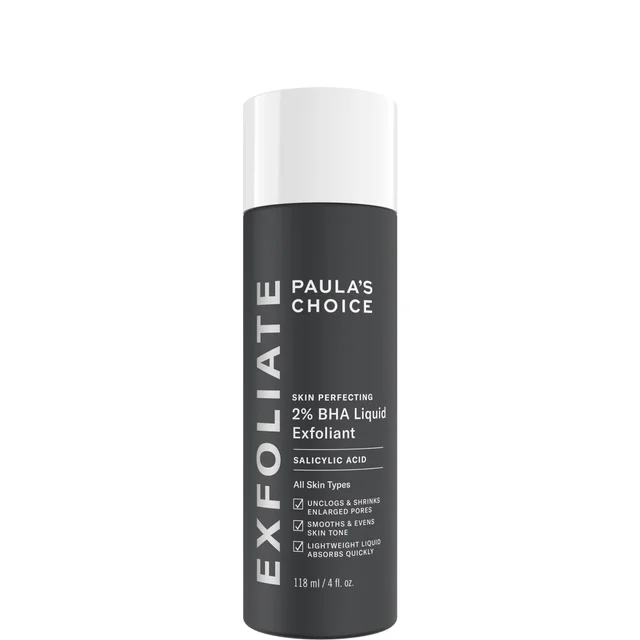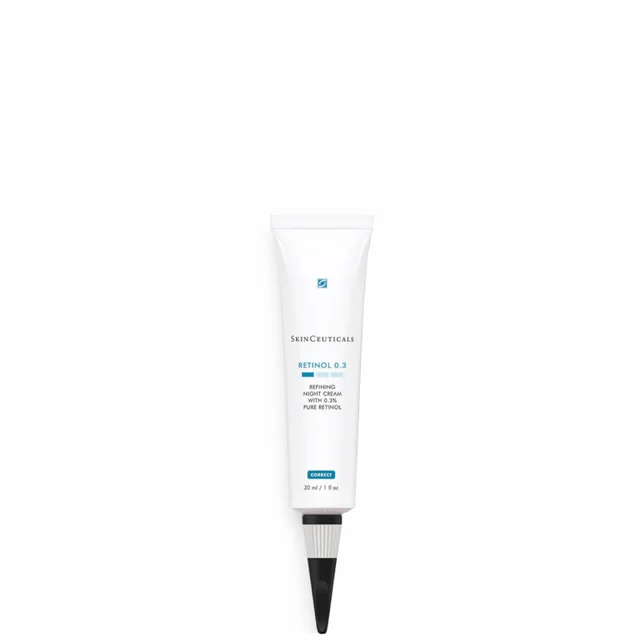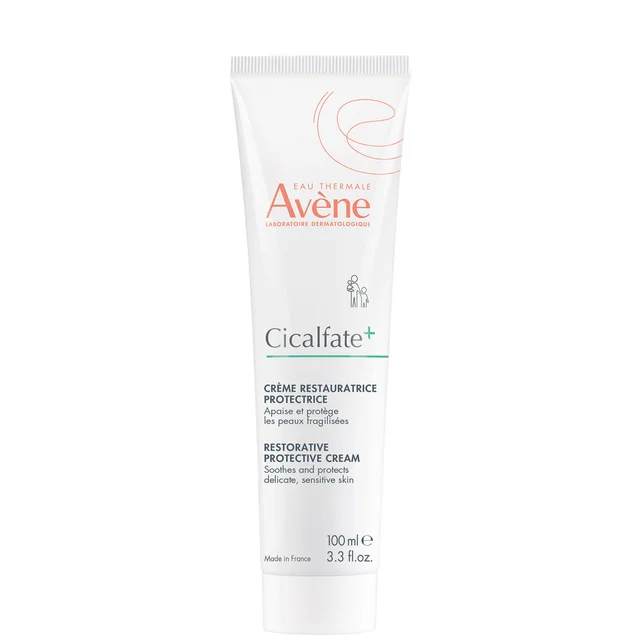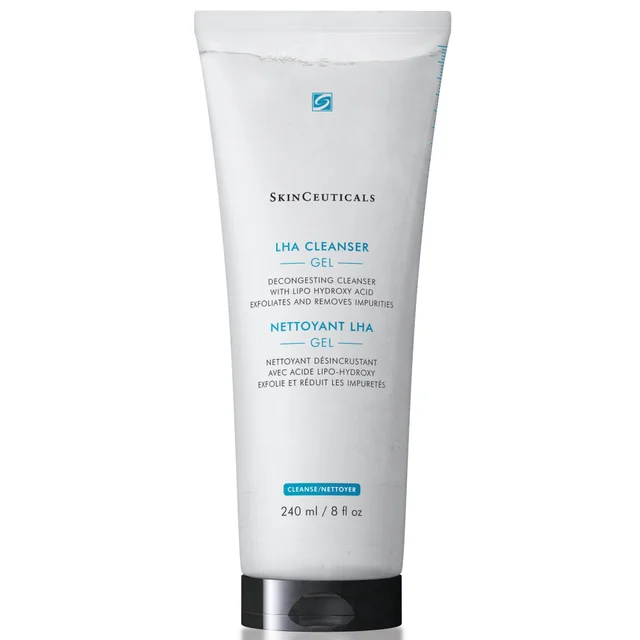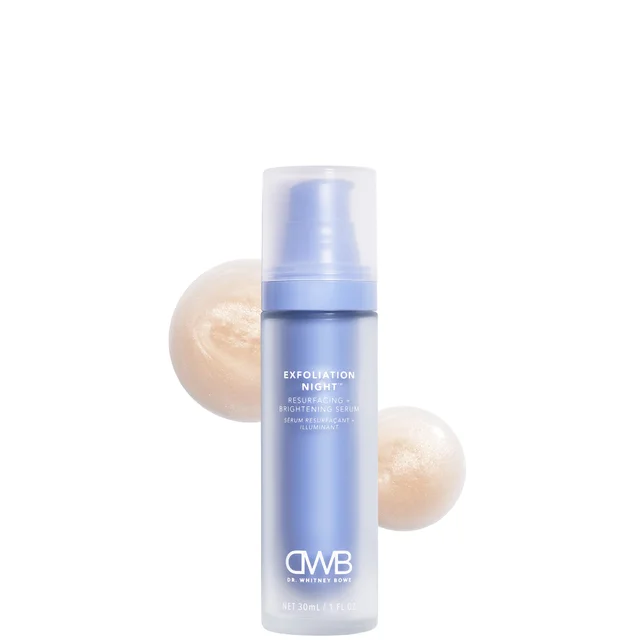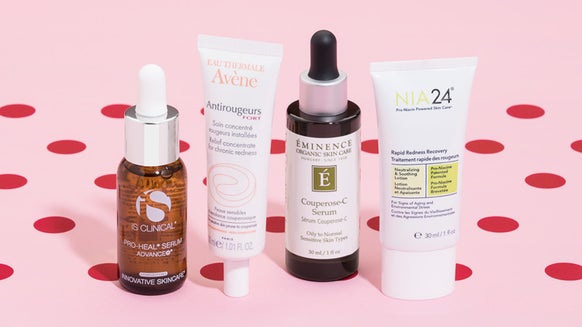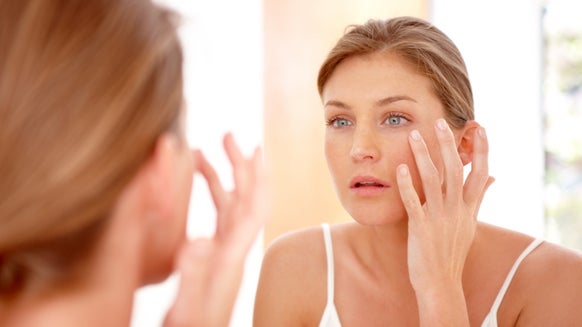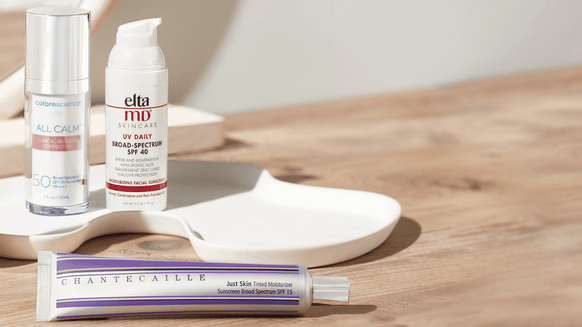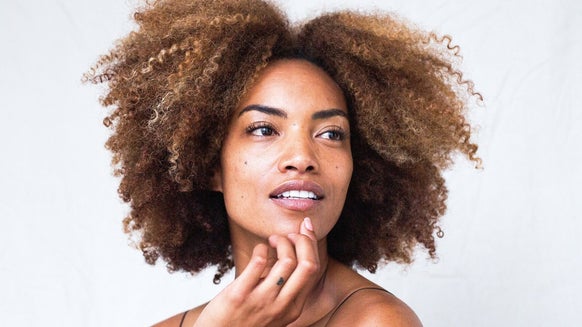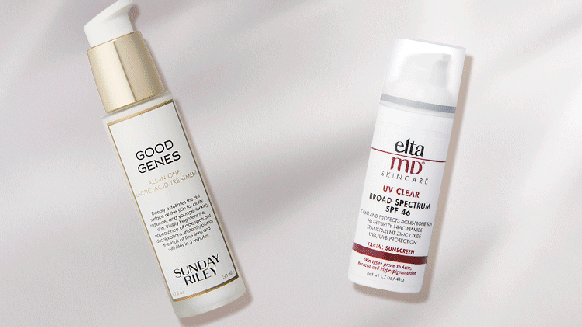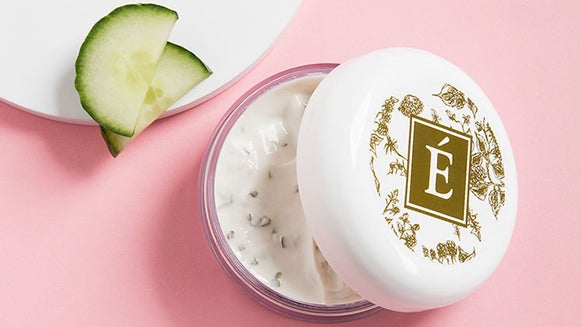What Are Those Tiny Bumps on Your Face? Here’s What a Derm Says
We’ve all been there—standing under unforgiving lighting, brows furrowed, poking and stretching skin as we try to scrutinize and figure out what those mysterious tiny bumps on our face are. Is it a pimple brewing under the surface? Trapped dirt, perhaps? Or maybe a rash waiting to happen after coming into contact with an allergen? Whatever they may be, there’s one thing we know for sure: those tiny bumps can put a real damper on your quest for smoother, healthier skin. And if they’re not acne, what could they be? Below, we spoke with an expert to help us demystify these little intruders and find out how to banish them from your skin.
Meet the Expert
- Dr. Connie Yang - Board-certified dermatologist and member of Dermstore’s Medical Advisory Board
Types of Tiny Bumps on Your Face
1. Closed Comedones
Closed comedones, which also go by whiteheads, are the most common type of bump that pop up on your skin, says Dr. Connie Yang, board-certified dermatologist and member of Dermstore’s Medical Advisory Board. These are clogged pores that appear as small, white or flesh-colored bumps and occur when dead skin cells and oil become trapped inside the pores. Closed comedones can often lead to acne as they can become a hotbed for bacteria that cause inflammation and even infection.
How to Treat Closed Comedones
Treating closed comedones involves exfoliating the skin and unclogging pores, so Dr. Yang recommends turning to beta-hydroxy acids (BHAs) to get the job done. “I recommend a topical BHA liquid exfoliant like the one from Paula’s Choice two to three times weekly for this,” she suggests. Maintaining a consistent skincare routine that includes gentle cleansing and non-comedogenic moisturizers can also prevent future formations of whiteheads.
Paula's Choice Skin Perfecting 2% BHA Liquid Exfoliant
2. Milia
Although milia is more common in newborns, they can also appear in adults. “Milia are small, firm, white cysts caused by keratin buildup under the skin,” explains Dr. Yang. Unlike acne or whiteheads, milia are not formed inside the pores but rather under a thin layer of skin. You’ll often find them in small clusters around the eyes and cheeks and can be quite a challenge to remove on your own.
How to Treat Milia
Because milia are not trapped within pores, exfoliation may not be enough to flush them out. The good news is that milia often self-resolves, but if you don’t want to wait weeks or months for them to go away on their own, then your best bet would be to seek professional treatments like cryotherapy, laser ablation, or extraction. That said, Dr. Yang says you can also prevent them from forming with consistent use of retinol and gentle chemical exfoliants to prevent keratin buildup. After all, prevention is always better than cure.
SkinCeuticals Retinol 0.3
Milia can take its sweet time before packing its bags and vanishing, so reach for this potent and beginner-friendly retinol to speed up its departure (and discourage it to come for a visit). Infused with 0.3 percent retinol, soothing bisabolol, and botanical extracts, it increases cell turnover and prevents keratin buildup while boosting collagen production.
3. Folliculitis
Inflamed hair follicles can lead to pink or brown bumps that may sometimes be filled with pus. This condition is known as folliculitis, and it typically occurs when the hair follicles are dealing with some blockages, irritation from shaving, infection, or certain skin conditions. Folliculitis can happen anywhere you have hair—on your neck, back, chest, scalp, buttocks, or thighs. On the face, they usually appear near the hairline and the cheeks and neck for men who have facial hair. Overgrowth of yeast in the hair follicles can also lead to fungal folliculitis, although Dr. Yang says this type is rather uncommon.
How to Treat Folliculitis
Treating folliculitis starts with figuring out its underlying cause. Traction folliculitis, for example, appears along the hairline or on the scalp and is caused by tight buns or hairstyles. If you’re dealing with the fungal kind, Dr. Yang suggests applying a topical antifungal cream is your best course of action. Look for treatment creams with ketoconazole and clotrimazole or moisturizers with tea tree oil or centella asiatica (cica).
Eminence Organic Skin care Clear Skin Probiotic Moisturizer
Antifungal treatments can sometimes cause dryness, so if you’re struggling with fungal folliculitis, make sure you’re nourishing your skin with this lightweight probiotic moisturizer. Infused with tea tree oil and willow bark extract, it combats the overgrowth of yeast and bacteria in the hair follicles while calming inflammation. Lactic acid and yogurt-derived probiotics also make an appearance to provide gentle exfoliation and support a healthy skin microbiome.
4. Sebaceous Hyperplasia
If the bumps dotting your face appear as small, soft bumps with a depressed center, it’s likely sebaceous hyperplasia. “Sebaceous hyperplasia is an overgrowth of the oil glands in the skin,” explains Dr. Yang, adding that the condition’s leading cause is likely genetic. Yellowish or flesh-colored, these bumps often appear on the cheeks and forehead. While they are benign and pose no threat to your health, they tend to resemble basal cell carcinoma, so going to your doctor for a proper diagnosis definitely won’t hurt.
How to Treat Sebaceous Hyperplasia
According to Dr. Yang, sebaceous hyperplasia is best addressed by professional procedures that use heat or cold to remove the overgrown glands. “In-office procedures like electrocautery and cryosurgery are the most effective treatment for this,” says Dr. Yang. The condition can also be prevented by using retinoids and salicylic acid as these “can help prevent clogged oil glands,” she adds.
Dr. Dennis Gross Alpha Beta Universal Daily Peel
Combining glycolic, salicylic, and lactic acids, this two-step exfoliating solution helps unclog sebum-filled pores and prevents excess oil glands from creating visible bumps on your skin while encouraging faster cell turnover to even out your complexion.
5. Perioral Dermatitis
“Perioral dermatitis is a medical condition that presents as small, red bumps or pustules clustered around the nose and mouth,” explains Dr. Yang. Although its exact cause is unknown, it can be triggered by a few factors, including use of topical steroids, certain skincare products, and hormonal changes.
How to Treat Perioral Dermatitis
Treatment for perioral dermatitis usually involves prescription medications, says Dr. Yang, but it’s just as important to tweak your regimen to focus on barrier repair and let your skin take a breather from potent active ingredients. “I recommend soothing products like Avene’s Calcifate+ Restorative Protective Cream or La Roche-Posay Cicaplast Balm,” she suggests.
Avène Cicalfate+ Restorative Protective Cream
If you’re dealing with perioral dermatitis, adding a barrier-repairing and irritation-soothing product to your skincare routine is key. Infused with copper sulfate, zinc sulfate, thermal spring water, and C+ Restore–the first patented post-biotic restoring active ingredient–it calms redness, heals and comforts compromised skin, and fortifies the skin’s natural defenses while boosting hydration levels.
6. Demodex Mites
Make sure you’re seated for this one. Our skin plays host to thousands of microscopic mites at any given time. Yes, you heard that right. Demodex mites, also known as eyelash mites, are minuscule arachnids, similar to spiders and ticks, that live on our face. They can be found near the nose, eyelash, eyebrows, and hairline, feeding on the dead cells and oils on the skin’s surface. And while this may sound like the stuff of nightmares, demodex mites are, in fact, “naturally occurring organisms on healthy skin,” explains Dr. Yang. They’re usually harmless, but Dr. Yang says they can overgrow at times, especially for those with rosacea. This overpopulation can lead to inflammation and skin irritation, which leads to a condition called demodicosis and can involve redness, burning, and small raised bumps.
How to Treat Demodex Mites
“Prescription medications are most effective along with gentle soothing skincare to decrease inflammation,” says Dr. Yang. It’s also crucial to maintain proper facial hygiene and a gentle skincare routine to reduce inflammation. Make sure you also avoid oil-based skincare products to prevent the mites from multiplying and slow down their proliferation.
SkinCeuticals LHA Cleansing Gel
Oily, congested skin allows demodex mites to thrive, so reach for this deep-cleansing gel face wash to create an inhospitable environment for these microscopic invaders. Packed with lipo-hydroxy acid, glycolic acid, and lactic acid, it cleanses and provides cell-by-cell exfoliation to remove excess oil, debris, and dead skin cells. Its non-stripping, antibacterial, and anti-inflammatory formula also makes it ideal for those with rosacea-prone skin.
7. Keratosis Pilaris
Keratosis pilaris is often found on the thighs and upper arms, but it can also make an appearance under the eyes, on the cheeks, and on the nose. It is also referred to as “chicken skin” because of how it looks and feels—tiny bumps on the face that feel rough and are often red, purple, or skin-colored. Keratosis pilaris is a result of keratin buildup on the skin that leads to clogged hair follicles and pores. What causes this to happen isn’t exactly known, but studies suggest it’s more common in people with eczema and tends to run in the family.
How to Treat Keratosis Pilaris
If you’re genetically predisposed to develop keratosis pilaris, there’s not much you can do about it. For many, it’s something they’ll just have to live with, although there are signs that they can improve with age. But while there is no surefire solution to keratosis pilaris, you can improve its symptoms with gentle exfoliation using glycolic or lactic acids and rich moisturizers that contain hyaluronic acid and ceramides. And lastly, no matter how tempting it gets, make sure you don’t pick or extract those tiny bumps at home as that can quickly lead to skin damage, infection, and scarring
Dr. Whitney Bowe Beauty Exfoliation Night Resurfacing +Brightening Serum
With its high-performing blend of glycolic acid, salicylic acid, gluconolactone, and post-biotics, this nourishing exfoliating serum gently buffs the skin’s surface while going deep to stem keratin buildup, banish pore-clogging impurities, and soften stubborn bumps caused by conditions like keratosis pilaris.
FAQ
How Do You Get Rid of Small Bumps on Your Face?
As with each time you need to address a skin concern, the first step always involves identifying its root cause. If you’re dealing with closed comedones, for example, you’ll want to clear that blockage and prevent future clogs by adding salicylic acid exfoliation to your skincare routine. Conditions like fungal folliculitis and demodicosis (demodex mite overgrowth) respond to topical treatments and prescription medications, but others like milia and sebaceous hyperplasia are better handled by professionals through in-office treatments. Bumps, roughness, and redness can also be prevented by incorporating ingredients that support cell renewal, control oil production, unclog pores, and strengthen the skin barrier, such as retinol, BHAs, and ceramides.
The Bottom Line
Tiny bumps on the face can be due to several factors, and each requires a specific approach to treat and restore your skin’s smoothness and even texture. To address them effectively, it’s important to first understand their underlying cause. While some types of bumps disappear on their own over time, you can improve their appearance by incorporating products and ingredients in your skincare routine that focus on unclogging pores, keeping oil production under control, and maintaining your skin’s moisture levels. On the other hand, some conditions may require a professional approach. Stubborn bumps may require in-office treatments or prescription medications before they finally resolve, especially if they are fungal in nature, involve inflammation or infection, or pose a threat to your skin’s overall health.

Janeca Racho is a Journalism graduate with over 15 years of writing experience. After getting her start in public relations and advertising, she made the switch to freelance writing and began working for various lifestyle, fashion, and travel brands. Her love for all things skincare has led her to beauty reporting and research for the last ten years. Writing for several hair and beauty blogs, she reports on anti-aging staples, trending brands and products, must-have ingredients, and health and wellness.
